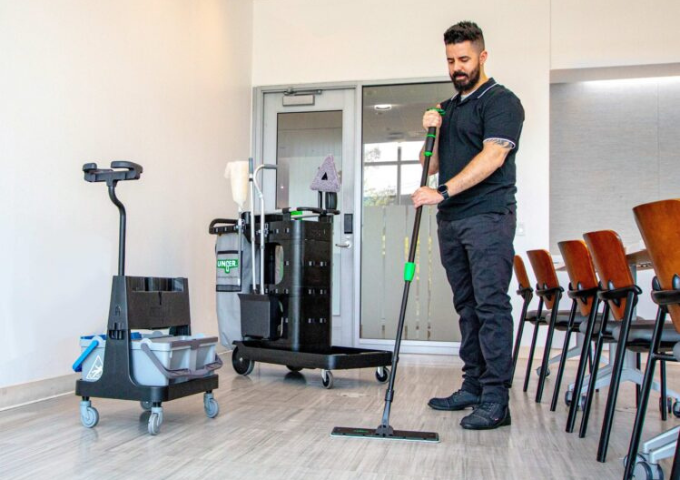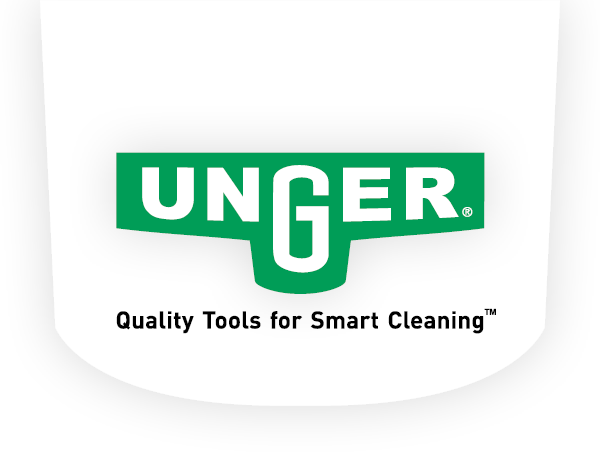NEW! Powerful Nano Filtration with Unger's HydroPower® Nano See The Product

From the Ground Up: How Proper Floor Care Supports Safety, Health, and Professionalism
Floors set the tone for health, safety, and first impressions for everyone who walks through it. Proper floor care is key to facility cleaning, injury prevention, and reducing the spread of bacteria, while keeping spaces safe and welcoming. After all, professionalism, good hygiene, and lasting first impressions all start from the ground up.
The Safety Factor: Slip and Fall Statistics
Under OSHA’s 1910.22 regulation, employers are responsible for maintaining all walking and working surfaces in a clean, safe, and sanitary condition. This includes ensuring floors are dry (or properly drained), free of hazards such as spills, debris, or damaged flooring, and structurally sound. Employers must also inspect floors regularly and promptly correct any unsafe conditions to prevent accidents.
Why is this OSHA regulation important? Slips, trips, and falls (STFs) are one of the biggest causes of workplace injuries. Janitors and cleaners account for about 30% of all nonfatal incidents, often leading to sprains, strains, or even dislocations, and an average of 11 days away from work to recover.
Proper floor care helps prevent these accidents and keeps both staff and visitors safe. Key practices include:
- Regular cleaning schedules to remove dirt, debris, and spills promptly
- Immediate spill response with appropriate cleaning and drying
- Use of wet floor signage to warn of temporary hazards
- Floor mat placement at entrances to reduce tracked-in moisture and debris
- Routine inspection of flooring for damage or uneven surfaces
- Proper drying after floor mopping or cleaning high-traffic areas
- Using the right floor cleaning tools for each floor type to maintain the floor’s integrity
Slip-and-fall incidents not only affect health, but they also carry a significant financial burden. The injury rate for lost-time cases among janitors is 1.1 per 10,000 full-time employees. The National Safety Council estimates that each occupational injury requiring medical consultation costs approximately $42,000.
The Hygiene Factor: Bacteria Hotspots & Cross-Contamination Beneath Our Feet
Even spotless-looking floors can harbor more than meets the eye. They often act as pools for bacteria, viruses, and allergens that spread through normal everyday activity. The length of time these pathogens remain infectious varies: some cold and flu viruses can survive for over a week on hard surfaces, though most persist for several hours. That’s still long enough to pose a significant risk in busy environments.
Without proper floor cleaning and disinfection, these microorganisms can transfer from one area to another, creating hidden hygiene risks throughout a facility.
- Floors as reservoirs: Microorganisms build up from shoes, spills, and airborne particles, surviving longer on hard surfaces.
- High-traffic hotspots: Restrooms, cafeterias, lobbies, and entryways are most at risk due to moisture in these areas and heavy foot traffic.
- Cross-contamination risks: Germs spread as people move between areas or when cleaning tools are reused without proper sanitation.
Preventing these risks starts with the process. Consistent cleaning schedules, separate tools for different zones, and proper mop maintenance all help contain germs before they spread. When facilities prioritize clean, well-maintained floors, they reduce the risk of illness, improve indoor air quality, and create healthier environments for everyone.
The Aesthetic Factor: First Impressions Count
Floors also shape how a facility is perceived. As one of the largest visible surfaces, floors immediately signal the standard of care, professionalism, and pride within a facility. In fact, according to recent data, 85% of property owners say improving their facility’s image is their top challenge.
Clean, well-maintained floors communicate reliability and attention to detail. In offices, they reinforce professionalism and morale; in schools, they reflect safety and care; and in hospitality spaces, they set the stage for a positive guest experience.
When floors appear dull or poorly maintained, they can undermine confidence in the facility as a whole, but when properly cared for, they enhance trust, comfort, and overall perception. Clean floors demonstrate that a facility’s reputation truly starts from the ground up.
Best Practices for Maintaining Floor Hygiene
Clean floors don’t happen by chance; they result from process and planning. Effective floor hygiene depends on a balanced approach that combines consistent routines, the right floor cleaning equipment, and properly trained staff.
1. Schedule and Frequency
Daily cleaning is essential to remove dirt, debris, and surface contaminants that accumulate through regular traffic. Deep cleaning (performed weekly or monthly, depending on the facility) targets buildup in corners, grout lines, and hard-to-reach areas. Establishing and documenting cleaning schedules ensures accountability and consistency across shifts.
2. Use the Right Floor Cleaning Tools
Ergonomic, high-efficiency tools like microfiber mops, flat mop systems, and floor squeegees improve both cleanliness and worker comfort. Microfiber in particular captures more dirt and bacteria compared to traditional cotton, reducing cross-contamination and minimizing chemical use.
3. Training and Technique
Proper staff training is just as necessary as the tools themselves. Employees should understand how to handle chemicals correctly, use equipment efficiently, and apply appropriate floor mopping techniques to avoid recontamination. Regular refresher sessions with cleaning staff reinforce consistency and safety across teams.
Unger offers comprehensive training on the proper use of our floor mopping equipment, along with a library of how-to videos designed to help cleaning professionals get the most effective and safe results from every product. By combining the right tools with expert instruction, facilities can ensure consistent performance and cleaner, safer floors.
4. Environmental Considerations
Choosing low-VOC, biodegradable cleaning agents and optimizing water usage supports environmental goals while maintaining hygiene standards. Green-certified solutions also promote better indoor air quality and occupant well-being.
A Foundation for Safety, Health & Trust
Clean floors form the foundation of safety, health, and trust in any facility. From preventing slip and fall accidents to reducing the spread of bacteria and allergens, well-maintained floors support the well-being of staff, students, guests, and visitors while reinforcing a professional image.
For facilities that want to maximize safety, hygiene, and first impressions, partnering with Unger provides access to advanced floor cleaning systems and expert guidance – helping every space look, feel, and perform its best. Contact us today to discuss your facilities’ floor care.
